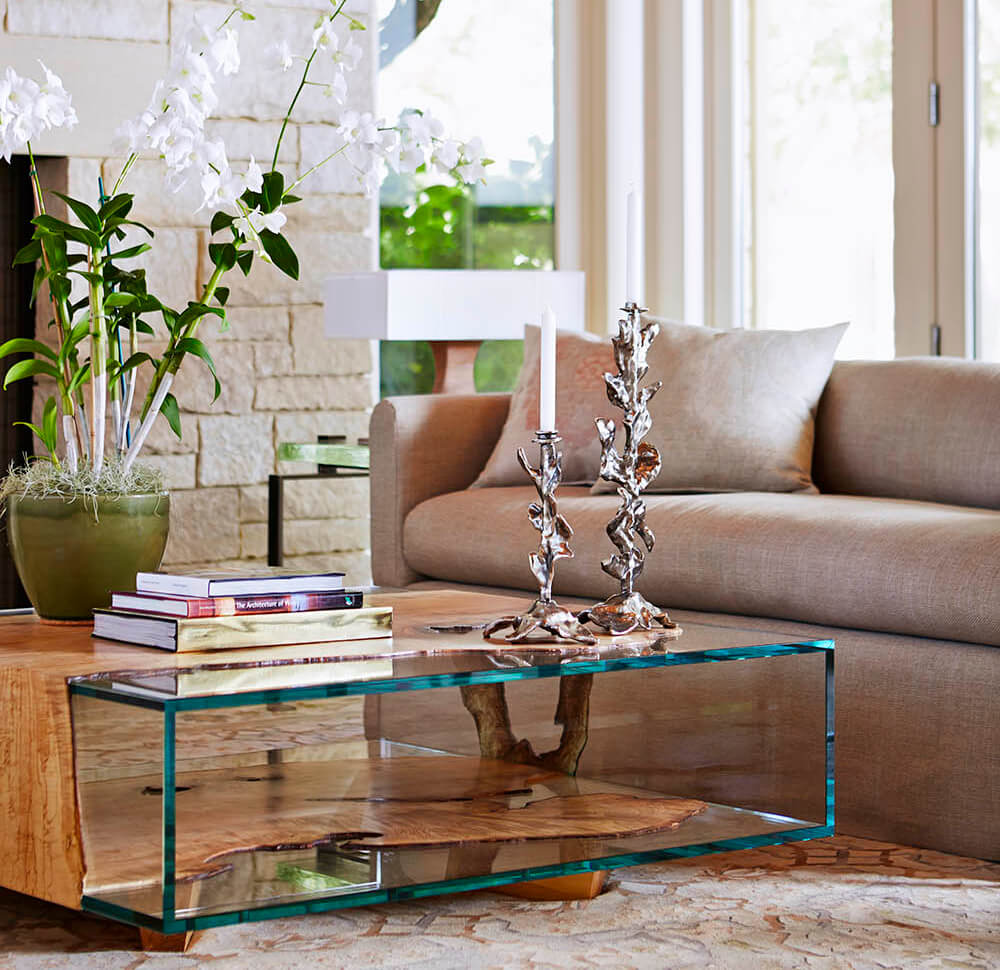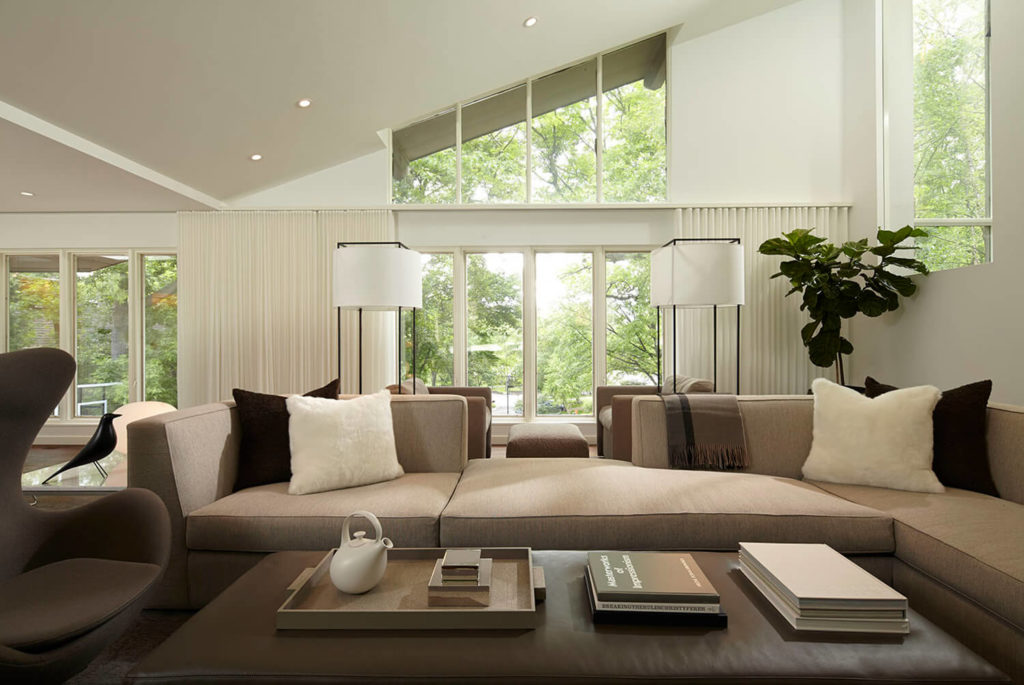STAY IN TOUCH
Subscribe to our newsletter for studio updates and design inspiration.


It’s no secret that the outdoor world inspires us each and every day. Whether we find ourselves hiking trails, skiing our favorite mountain peaks, or lounging by ocean waves, our lives are without a doubt connected to the greater spaces around us. Yet, too often, interiors feel disconnected from the environment, emphasizing a separation of two worlds and prioritizing industrial materials without regard for how they impact our well-being.
While there is a definite difference between our outdoor and indoor realms (especially in intense climates where temperature control is a must), we can and should still optimize our spaces in every way we can, pulling exterior elements into our interior style in a way that feels fresh and organic. Today, we’ve rounded up some of our favorite ways to accomplish this, and combined together, these steps will have your home feeling like the ultimate retreat in no time.
First and foremost, you want to consider your local topography and use that to inspire your design. Do you live in Napa Valley where there are a plethora of rolling hills and vineyards? Or does your home look over a crisp and cool lake in the mountains of Montana? Wherever you reside, it’s important to tailor your design to that style. After all, while you certainly can add in pops of inspiration from elsewhere, a full-on beach house aesthetic is likely to feel out of place in an area that gets snow for over half the year.

Now that you have your base knowledge of your design direction, it’s time to get into the details. Which patterns and textures in the world around you bring a flood of inspiration? By incorporating these into your design in a multitude of ways, your space is guaranteed to feel curated and purposeful, adding a sense of organic aesthetic to an otherwise cold and separate room. Not sure what to include? Remember that natural patterns and textures can be used just about anywhere, from an exposed wood-paneled ceiling to furniture silhouettes that are reminiscent of the views outside your windows. The trick, ultimately, is to layer your collection so that it feels visually appealing with a touch of unpredictability (just as you’d find in nature).

After you’ve narrowed down your key patterns and textures, you’ll need to add in a splash of color to the mix. While there are no hard and fast rules about palettes to use (and oftentimes an unexpected accent color can be just the thing you need to complete your space), it is important to look to the outdoors for those naturally-occurring color schemes that instantly catch your eye. Those are the elements you want to emphasize, and by adding those specific aspects, your room is sure to flow smoothly from the outside in.

Finally, it’s essential to prioritize open views in your design. Wherever possible, keep windows and doorways unobstructed so that you and your guests can enjoy occasional glimpses of the outdoors – even as you’re seated in a temperature-regulated space. When we can see the exterior of our homes, it tends to affect our moods in positive ways, bringing a sense of calm and serenity to our daily activities.

Just because you’re designing for the indoors doesn’t mean that your space needs to feel completely separate from the world beyond your home’s walls. Turn to the outdoors instead for pops of inspiration and you’ll find that your space will become an oasis of its own accord – complete with a tranquility that can’t be beat.